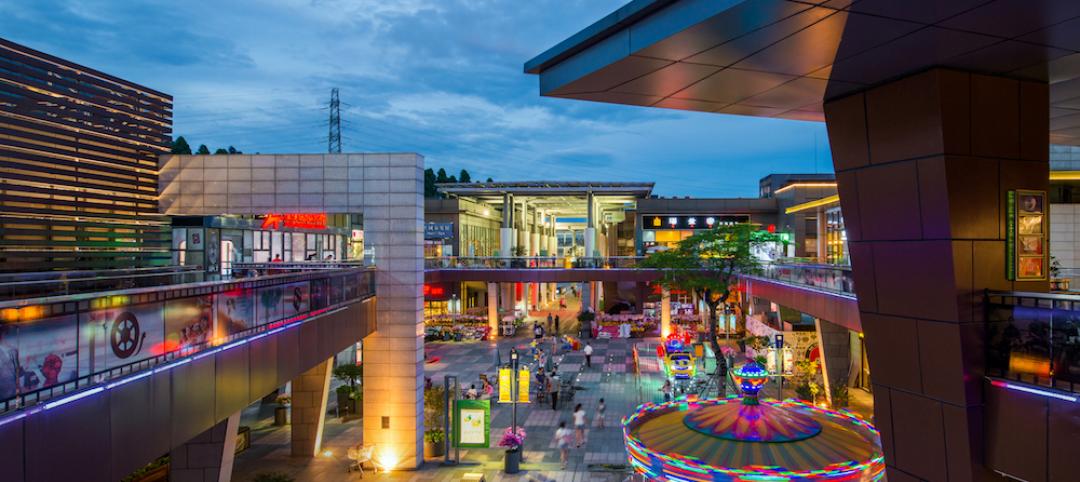At 32 stories, the B2 residential tower at Atlantic Yards near Brooklyn has been widely lauded as a bellwether for modular construction. But since construction started about 18 months ago, only five of the floors have been built—and developer Forest City Ratner Companies now has a Chinese partner that will move forward on the next three residential buildings, using conventional construction.
According to a report in the New York Times, Forest City Ratner's development partner, Greenland Holding Group, will now have a majority stake in the 22-acre Atlantic Yards mixed-use project. The Shanghai-based firm will oversee the next three residential tower projects, while Forest City Ratner continues to move forward with B2. Completion of the 348,000-sf modular tower, comprising 930 modules and 363 apartments, had been moved to late 2015, more than a year later than planned.
MaryAnne Gilmartin, Forest City Ratner's chief executive, says technical difficulties have been substantial, both at the nearby factory that's creating the modules and on the Atlantic Yards job site. “It’s been terribly frustrating," she told the New York Times. "But I don’t think this is a referendum on modular. The best way to prove that this works is to build B2.”
The Building Team for B2 includes Skanska, FC + Skanska Modular (a collaboration between Forest City Ratner and Skanska, which is building the components), SHoP, and Arup.
Related Stories
Architects | Jul 28, 2016
Connecting the dots: Architecture and design in a changing world
What do Tesla, Airbnb and Amazon have in common? They’re all shifting the paradigm for quality of life and the built environment, as CallisonRTKL senior associate VP Jayson Lee explains.
| Jul 26, 2016
ENGINEERING GIANTS: Firms continue to push innovation
Trends include 3D printing, modular hospitals, and fluid dampers.
| Jul 26, 2016
Top 80 Architecture/Engineering firms
Stantec, HOK, and Callison RTKL once again top Building Design+Construction's 2016 ranking of the largest architecture/engineering firms in the United States.
| Jul 25, 2016
Top 35 Engineering/Architecture Firms
AECOM, Jacobs, and Thornton Tomasetti head Building Design+Construction's 2016 ranking of the largest engineering/architecture firms in the United States.
| Jul 25, 2016
Top 100 Architecture Firms
Gensler surpasses $1.1 billion in revenue, topping Building Design+Construction’s annual ranking of the nation’s largest architecture firms, as reported in the 2016 Giants 300 Report.
Healthcare Facilities | Jul 25, 2016
AIA selects seven winners of healthcare building design award
The National Healthcare Design Awards recognizes functional hospital projects that solve aesthetic, civic, urban, and social concerns. Recipients were selected in three categories this year.
Industrial Facilities | Jul 25, 2016
Snøhetta, Bjarke Ingels among four finalists for S.Pellegrino bottling plant design
A committee will evaluate proposals in September.
Architects | Jul 22, 2016
5 creative approaches to finish standards
With the right mindset, standards can produce great design for healthcare facilities, as VOA's Candace Small explores.
Retail Centers | Jul 21, 2016
MVRDV designs Seoul entertainment district with gold entrance and curtain façade
The 9,800-sm complex will have retail and nightclub space. A plaza separates the two concrete buildings.
Healthcare Facilities | Jul 20, 2016
Process mapping simplifies healthcare design
Charting procedures and highlighting improvement opportunities can lead to developing effective design strategy simulations. GS&P’s Ray Wong writes that process mapping adds value to a project and bolsters team and stakeholder collaboration.


















